Rumors of Scottish football’s demise have NOT been greatly exaggerated. Founded in 1873, Scotland’s Football Association (SFA) is the second oldest in the world (behind England’s), but it is currently at a crossroads. Known worldwide for the “Old Firm” rivalry between Celtic and Rangers, by far the two biggest clubs in Scotland, the top-flight Scottish Premiership has lost a lot of lustre since financial shenanigans led to Rangers’ relegation in 2012. Since then, Rangers has had to slug its way through the country’s lower leagues to get back to the top flight, and there has been only one Old Firm match (in a Scottish League Cup semi-final in January 2015) as a result. Without these famous--and infamous--fixtures, the clubs in Scotland have lost millions in TV revenue as well as significant amounts of prestige. This Scottish Premiership guide will review the league’s history and traditions as well as its current member clubs and key competitions.
The Premiership: A Brief History
Although the SFA is one of the oldest footballing governing bodies in the world, the sport at the professional level in Scotland has been through several incarnations. Since 2013, the domestic leagues in Scotland have operated on a four-tier system, with the Premiership at the top. The collective entity is known as the Scottish Professional Football League (SPFL).
Scottish football is best known for the rivalry between Rangers and Celtic, one which transcends footballing matters and enters into the realm of politics, religion and ethnicity. Known collectively as the “Old Firm,” Celtic and Rangers have engaged in some of the fiercest battles in the sport on the pitch, while their respective fans do battle both in the stands and on the streets of Glasgow. The two teams have come to represent opposing sides in various political and social struggles in Ireland and Britain. Unfortunately (or fortunately, depending on your perspective), with Rangers stuck in the lower leagues, these prominent contests have become largely a thing of the past. Although that may change if Rangers, as expected, earns promotion for the 2016-2017 season.
On a much lighter note, the SFA also oversee the Scottish Cup, the world’s oldest domestic cup trophy in football. All 42 professional clubs as well as select amateur teams in Scotland qualify for the single, knockout tournament. The final is held in the national stadium--Hampden Park in Glasgow--in late May each year. Celtic have won it a record 36 times and Rangers have won it 33 times; Queen’s Park come in a distant third with 10 Cup wins.
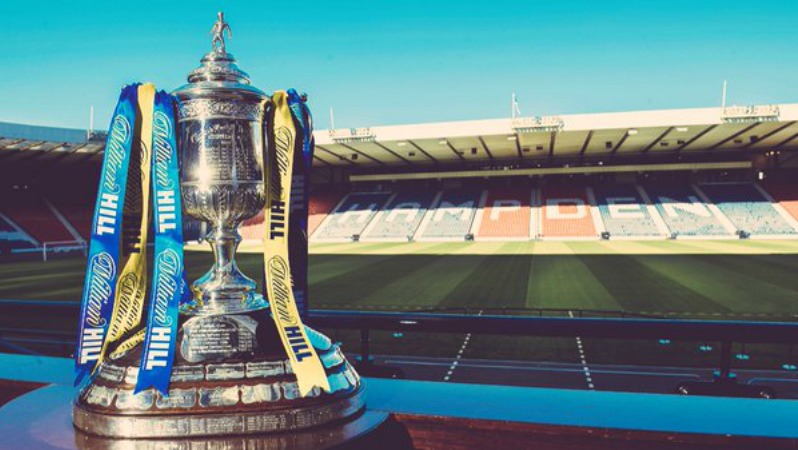
The Scottish Cup at Hampden Park.
As with most domestic top-flight leagues in Western Europe, the Scottish Premiership runs on an August to May schedule annually, occasionally with a short break in January to accommodate for Scotland’s cold climate.
Domestic Cup matches--competitions for the Scottish Cup and the League Cup, which is only open to the 42 professional clubs in Scotland--are typically played in midweek as the European and international competition calendar allows.
The League Cup is the first trophy awarded in Scotland each season (typically in mid-March). The league title is awarded in mid-May, while the Scottish Cup Final is typically scheduled for the last weekend in May.
The Premiership or top-flight of the SPFL consists of 12 clubs. Each club plays its league rivals three times, for a total of 33 matches. In April, the 12-team league is split into the “top six” and “bottom six” clubs. Each of the six clubs in these groups plays the other clubs in their “six” once, bringing the total matches played in domestic league competition to the standard 38.
For most of the 1980s, 1990s and 2000s, only the bottom club in the 12-team league table at the end of the season faced relegation into the second-tier Championship (formerly League One), and thus only one second-tier club was eligible for promotion into the top flight. However, the 2013 reorganization introduced a playoff system: Now, the last-place team is automatically relegated into the Championship, and the 11th-place club enters into a play-off against the winner of a play-off between the second- and third-place teams in the Championship to decide which club will play in the top flight the following season.
Confused? You’re not alone.
The feeling in Scotland was that the system was designed to help speed Rangers’ return to the Premiership after the club’s forced relegation to the bottom tier in 2012. Unfortunately, Rangers finished third in the Championship last season and lost in the play-off to Motherwell, dooming the legendary club to at least a fourth season in the lower leagues of Scotland.
The club’s failure to earn promotion was not insignificant. The lack of Old Firm matches has cost the sport in Scotland untold millions in revenues and led to a general feeling of malaise around domestic competition in the country. Attendance and television rating for matches is down significantly.
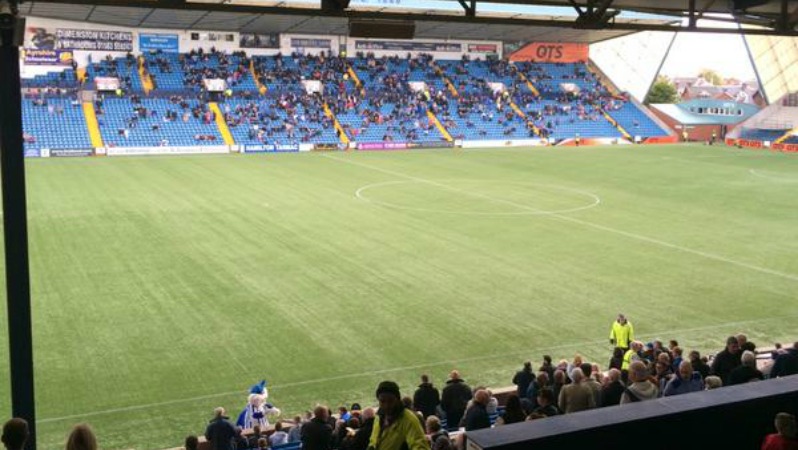
Empty seats, like those at Klimarnock's Rugby Park, have become a common sight at Scottish Premiership matches.
With Rangers out of the top flight now for several seasons, the league’s profile in Europe has unfurled as well. Only the first-place team in the Premiership qualifies for European Champions’ League, and even they must survive three grueling qualification play-off rounds to make the competition’s lucrative group stages. Celtic, the favorites to win the league without much competition given Rangers’ demise, have not been able to make to the Champions’ League group stages for two consecutive seasons now, which has hurt the club financially.
The second and third-place finishers in the Premiership (as well as the winners of the Scottish Cup) also qualify for European competition, but it is at the Europa League level.
Celtic remain the only Scottish club to even win the Champions’ League/European Cup. The club upset Inter Milan to take home the trophy in 1967.
Scottish Football: The Clubs
The teams in the Scottish Premiership guide for the 2015-2016 Scottish Premiership season are:
Celtic
By far the most well-known of the clubs in the top flight, Celtic have a global following. However, without archrival Rangers, the club struggles to remain relevant in the crowded British footballing scene. Rumors of a migration to the English FA (a la Cardiff City and Swansea City in Wales) have abounded for years. They will win the Premiership with little challenge.
Aberdeen
The second-strongest club in Scotland, albeit a distant second, the Dons are the last non-Old Firm side to win the league. They accomplished this in 1984, when they were led by some guy named Sir Alex Ferguson, although he hadn’t been knighted at that point.

Aberdeen took home the League Cup in 1989 and are the last club outside of Glasgow to win the Scottish top flight.
Hearts of Midlothian
Hearts and crosstown Edinburgh rivals Hibernian are, along with Aberdeen, the only other “big” clubs in Scotland. However, Hearts were relegated to the Championship in 2014 after having points deducted for financial malfeasance. They earned promotion back to the top flight after only one season, but they are still in recovery mode and anxiously await the promotion of Hibs, which is also currently mired in the Championship (noticing a trend?), and the return of Edinburgh derby days.
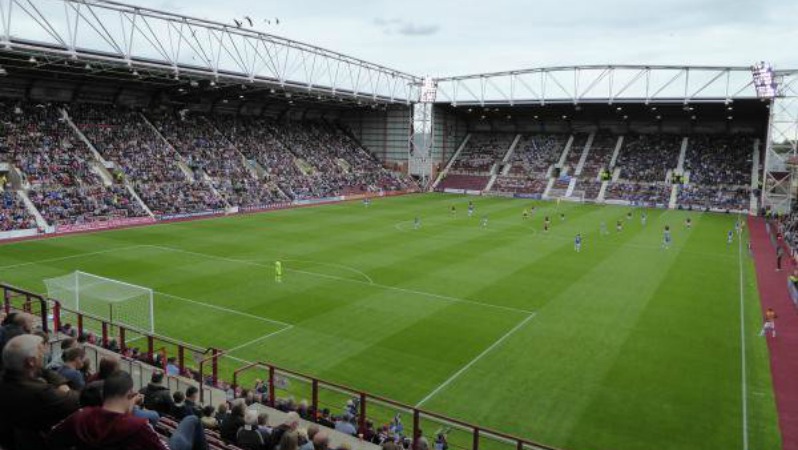
Hearts' stadium, Tynescastle in Edinburgh, is one of the toughest places for visiting teams in Scotland.
Dundee United
A once proud club, United have become sellers--of players--and the results have shown on the pitch of late. As of this writing, they are in danger of relegation to the Championship and a fan revolt may be imminent. Worst of all, most of the playing assets they’ve sold have been bought by league rivals Celtic, much to the dismay of supporters.
Dundee
The Dundee derby is unique due to the proximity of the two clubs. Dundee’s Dens Park is literally just yards from Dundee United’s Tannadice. Matches between the two clubs remain hotly contested, even though few care outside of Dundee city.
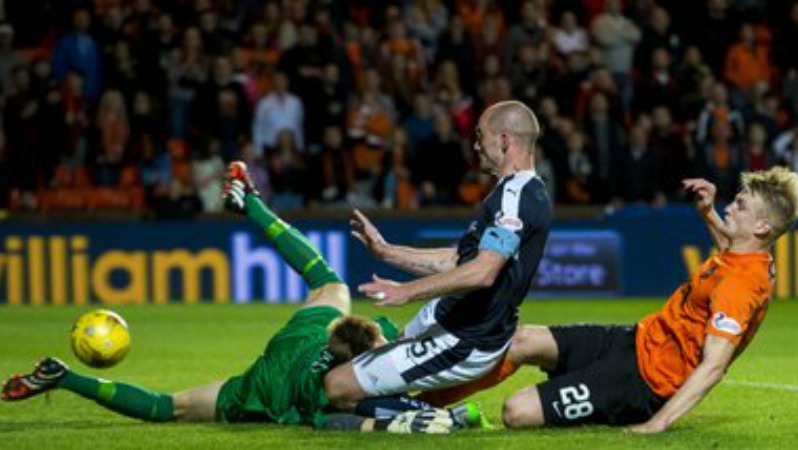
The Dundee Derby between Dundee and nearby neighbors Dundee United remains on of the most hotly contested rivalries in Scottish football.
Inverness Caledonian Thistle
Possessing arguably the best name in the sport, ICT have done well with limited resources. Thistle took home the Scottish Cup in 2015, its first major trophy. Founded in 1994, it is the youngest professional club in Scotland, and also among the smallest--it plays its home games in a 6,000-seat stadium.
Ross County
ICT’s Highlands rivals have a similar rags-to-riches history but have fallen on hard times of late. The club barely staved off relegation last season.
St. Johnstone
The Saints won their first and only major domestic trophy after taking home the Scottish Cup in 2014. That Cup success, and their finish in the Premiership in 2014-2015, had this small club tasting European competition--in Europa League qualifying--the past two seasons. Alas, their foray in continental competition was brief.
Partick Thistle
Glasgow’s “other” club, Thistle boasts at least one celebrity fan--in comedian Craig Ferguson--and is considered the club of choice for Glaswegians turned off by the Old Firm.
Motherwell
The Ironmen benefitted from Rangers’ relegation in the early days, earning a Europa League qualifying place in 2013. But since then, the club has seen a revolving door of managers and has barely staved off relegation.
Kilmarnock
Killie’s support has dwindled over the years but the club have placed a new emphasis on youth development with some success. They have been a mid-table side for decades now, but they did take home the League Cup in 2012 after defeating Celtic 1-0 in the final.
Hamilton Accies
Like Killie, Hamilton Academical prides itself on developing younger players and selling them off to bigger clubs, for big profits. Everton’s James McCarthy is a graduate of the Accies youth system.
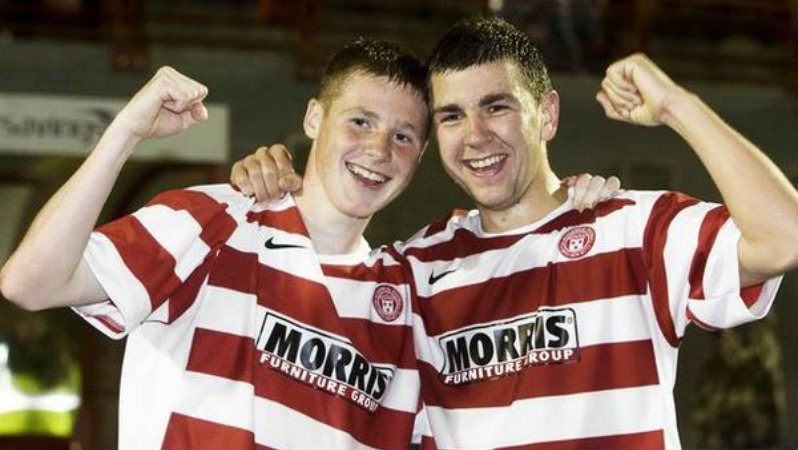
Ireland international and Everton stalwart James McCarthy started his club career at Hamilton Accies.
Scottish Premiership: The Players
As you might have guess by now reading this Scottish Premiership guide, Scotland’s time as a destination of choice for top players in the world has come and gone. However, some notables have suited up for Scottish clubs.
Henrik Larsson, for example, was a star at Celtic in the late 1990s and early 2000s before moving to Barcelona and Manchester United.
Speaking of Manchester United, former Red Devils skipper Roy Keane finished up his playing career at Celtic in 2006, and Robbie Keane also spent half a season at Celtic before signing with LA Galaxy.

Former Manchester United legend Roy Keane finished his playing career at Celtic in 2006.
Rangers stalwarts Kenny Miller and Kris Boyd had stints in Major League Soccer, and more recently former Dundee United starlet Ryan Gould is working his way toward fame and glory with Sporting Lisbon.
Celtic’s 1967 European Cup-winning team, the so-called Lisbon Lions, are the pride (pardon the pun) of at least some in Scotland, as all the notable players--Jimmy Johnstone, Bill McNeill, among others--all came from the Glasgow vicinity. The side was managed by the legendary Jock Stein, who is widely seen as one of the most innovative tacticians in the history of the sport.
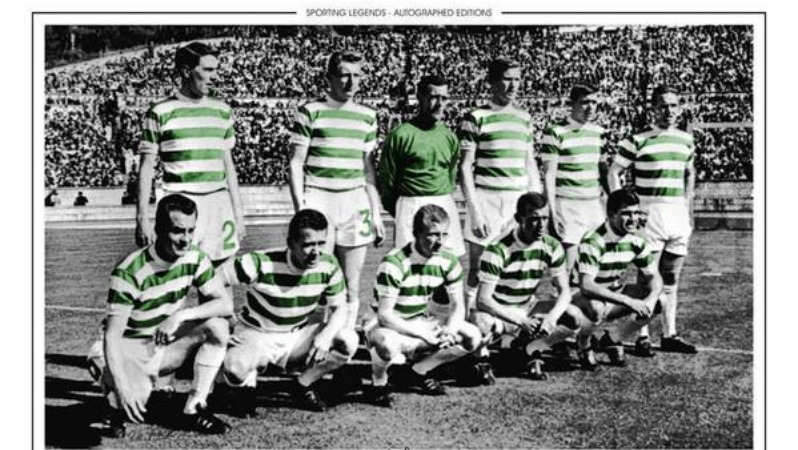
Celtic's Lisbon Lions are probably the greatest side to ever come out of Scotland.
Among current players, there are few household names, although Celtic’s Scott Brown captains Scotland’s national team. the Hoops also produced a number of notable English Premier League players, including most recently Southampton’s Virgil van Dijk.





